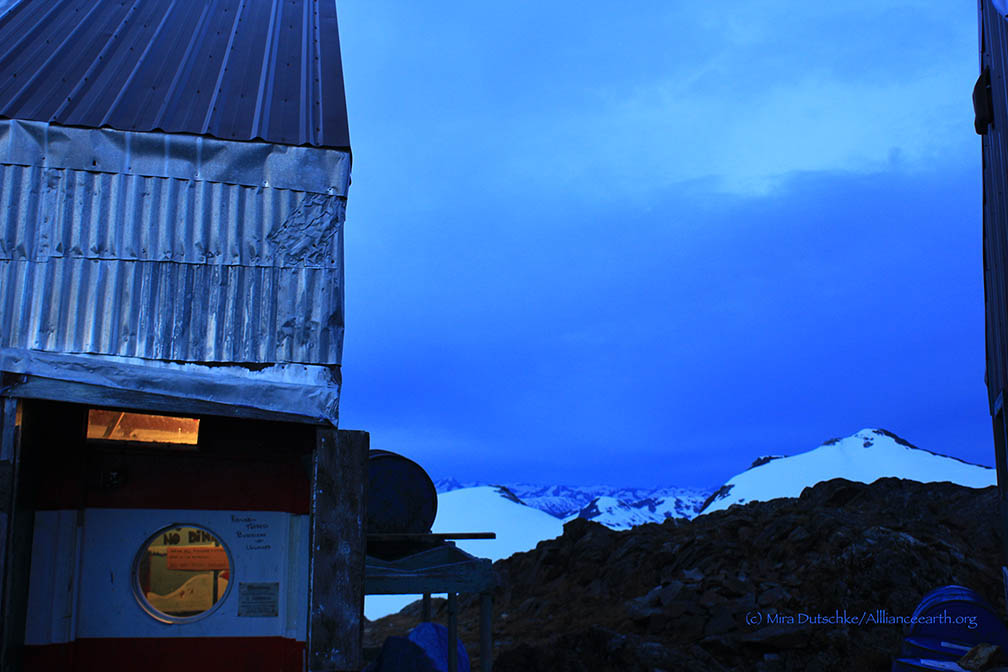Patrick Englehardt: What is your research focus?
Anthony Arendt: I focus on understanding how glaciers change in response to climate, with an emphasis on predicting how global sea level and local water resources are affected.
Patrick Englehardt: Where has your research taken you?
Anthony Arendt: My first glacial project took place on Ellesmere Island in northern Canada, where I spent three summers conducting research. I have also traveled to the North West Territories, Alaska, Greenland, and Antarctica.
Patrick Englehardt: Why do you conduct your research?
Anthony Arendt: Glacial change is a large contributor to rising sea level, which has significant societal impacts and global implications. It is especially important to understand how these changes will affect coastal communities, local water resources and agriculture.
Patrick Englehardt: What has been your greatest challenge?
Anthony Arendt: The first few years of my PhD were really challenging. During this time I figured out that Alaskan field work had a steep learning curve. I had to hone my mountaineering, glacial travel and survival skills and deal with the incredibly remote Alaskan wilderness. During the second year of my PhD I had a harrowing experience, falling into a glacial river and losing all of my glacier gear. This was the low point of my career and I seriously thought of quitting.
Patrick Englehardt: What kept you from giving up?
Anthony Arendt: I had a lot of support from family, friends and colleagues, all of whom encouraged me not to give up. I think my interest in glaciers also kept me going, and I knew that I could not learn all of these amazing things anywhere else but in Alaska. I’m glad I never gave up and I stuck with it, because my career improved after that.
Patrick Englehardt: Who was your greatest inspiration growing up?
Anthony Arendt: As a scientist it was David Suzuki. I remember, as a kid, watching him on television every week. He introduced me to new ideas about how we can care for the planet and mitigate climate change. What impressed me most was his honesty, something that has always stuck with me as I have strived to be fact-driven and honest with my research. Also I have been inspired by every advisor I have had during my career. Each has been a great mentor in their own right and helped me along the way.
Patrick Englehardt: How did you hear about JIRP?
Anthony Arendt: When I moved to Alaska in 2000 I heard about JIRP from a myriad of people, and I always wanted to take part in the program. I had hoped to participate as a student but schedules and research always kept me from doing that. Jeff [Kavanaugh] approached me and asked if I would teach this year at JIRP and I happily obliged. I was excited to finally be part of the long historical legacy of the many others before me, including my PhD supervisor [Keith Echelmeyer].
Patrick Englehardt: What suggestions would you have for aspiring scientists?
Anthony Arendt: Students interested in a scientific career face numerous opportunities, and also many challenges. In addition to learning a broad range of technical and mathematical skills, scientists need to develop strong communication skills, due to the highly collaborative nature of research today. At the same time, we know some of the greatest scientific discoveries come from long periods of working in solitude. So, finding educational opportunities that balance these elements is really important.
Patrick Englehardt: Do you believe that there are educational opportunities where aspiring scientist can gain these skills?
Anthony Arendt: I believe that JIRP provides great opportunities for developing these skills. I cannot think of a better environment for aspiring scientist to hone their research and safety skills while fostering a strong sense of community. At JIRP, students work towards a common goal while simultaneously conducting unique scientific research. JIRP is an excellent microcosm of the real scientific community where a love of nature and science connect people and connections are made for life.
Patrick Englehardt: If you had not become a scientist what would you do?
Anthony Arendt: No question, I would be a famous Jazz musician! I looked into musical colleges and I play piano, and I continue to play as a hobby.




























